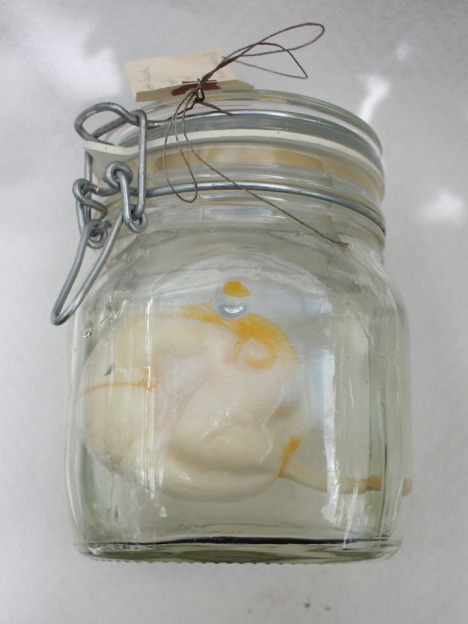It’s been almost two years (!), but I’m planning to revive Kinder/Garden this summer with more fetal vegetables. Some changes? Well of course! This time I’ll be growing fetal pigs (and maybe some other baby animals?) “Why?” you wonder. Well first because fetal pigs are a mainstay of biology teaching and are readily (and cheaply!) available as byproducts of the pork industry, but also because I’m fascinated by the University of Guelph’s Enviropig™ and all the ethical/environmental issues it poses…and also, I will most likely have access to a public outdoor arts garden (designed by my greenhouse hostess Kelly Andres).
Why has it taken so long for this return? Well last summer, I was pretty busy finishing up my MA. I did a site-specific (inorganic) anamorphic video installation in Montreal’s Griffintown, curated by Shauna Janssen for Urban Occupations. It was called Ghosts in the Machine: The Inquest of Mary Gallagher and you can check out documentation here, here and here.
That did not mean that I left the organic world altogether though. I also spent last summer documenting the lives of caterpillars raised by my entomology friends in Biology. I am still dealing with that footage but promise to share some images in future posts.
I have also started my PhD so yeah, I’m keeping pretty busy. Stay tuned though for more updates as I get back to kinder/gardening… in the meantime I have updated my more general blog, but you will see that I tend to keep it only for finished work and don’t update it nearly enough…
Filed under: Foetal imaging, Moulds, Related work? | Leave a comment »















